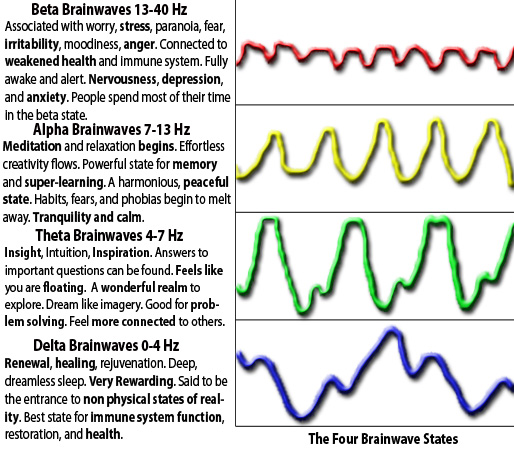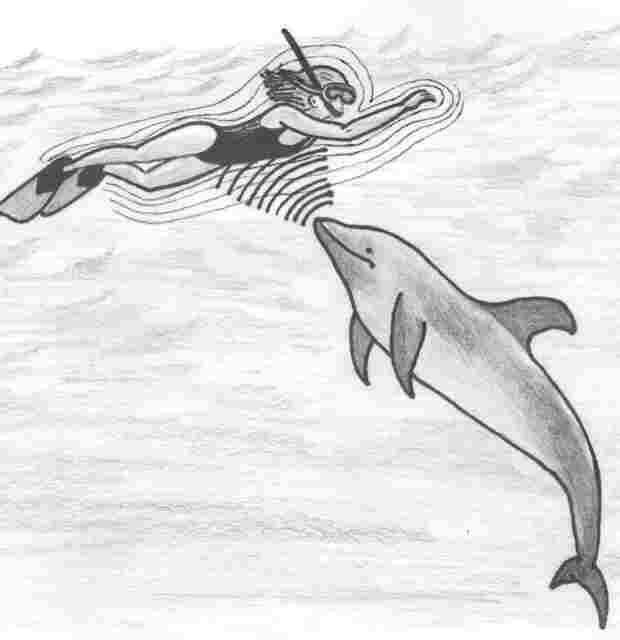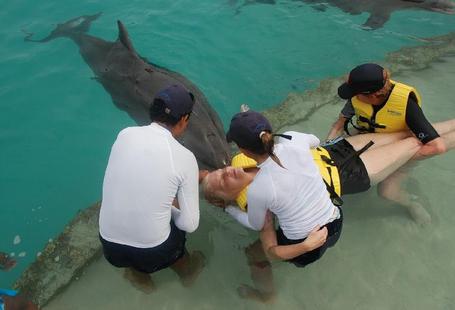How Dolphins Help Us
Aquatic therapy has long understood that being in the water has a therapeutic effect on people with varying types of disabilities (McKinney, A; Wolf, R.; 2001). Being in the water allows people that are in wheelchairs, freedom in movement otherwise not experienced. To this benefit include dolphins. Dolphins have been cited as having special capabilities that enhance healing potential in people with disabilities (Johnson, L.; Bourne, R.).
Living From The Heart, The Dolphin Experience, (720) 473-9157, macy@lfhdolphinexperience.org
An interesting observation made by Dr. Steve Jozsef of Living from the Heart, and David Cole of the Aquathought Foundation was that human brain waves shift from high-frequency beta to low-frequency alpha/theta waves after a dolphin encounter.
Beta waves are associated with increased concentration, alertness, and enhanced memory function. In contrast, theta waves are associated with enhanced creativity, sensory integration, and altered states of consciousness.
For the sake of reference, people exhibit theta waves in the fleeting moments when they drift from consciousness into sleep. It is a rare state that has been implicated in the "psychoneuroimmunology response'; the relationship between the nervous, endocrine and immune systems.
Theta brainwaves are associated with insight, intuition and a feeling of connectedness to others.
These brain-wave alterations may explain why people view swimming with the dolphins as a transcendental experience.
David Cole speculates that these brain-wave alterations are facilitated by sonar-induced cavitation.
Basically, the dolphin’s intense sound waves create alternating regions of compression and expansion that form small bubbles in the cell membrane.
In turn, these bubbles facilitate the transport of key neurological molecules from outside to inside neurons.
Susie participated in a dolphin therapy program to address chronic pain. The strong relaxation response induced boosts endorphin production.
To read testimonials from previous program participants, you may click here: Testimonials.
Scientists believe that a brain-wave shift of this nature strengthens the human immune system. Furthermore, after a dolphin encounter, research has shown a synchronization of brain-wave activity between the logical, analytical left brain and the intuitive, imaginative right brain.
Dolphin assisted therapy dates back to the 1950s and the work of Dr. John Lilly, who studied the effects of dolphins on individuals with disabilities (McKinney, A; Wolf, R.; 2001). In the late 1980's, Dr. Stephen Joszef, co-founder of Living from the Heart also carried out a neurological research study that shed valuable light on the mechanism of action for this most delightful and effective therapy.
David Cole and Dr. Jozsef found through their bioneurofeedback research that various interesting things happen in our brain after direct exposure to dolphin sonar. First thing that happens is that our brain wave pattern drops from an active state (beta brain waves) down to a meditative brain wave pattern (alpha and sometimes even theta brain waves).
Sidney's family reports great improvements after her program. To learn more about the successful stories of our dolphin therapy program, click here: Testimonials.
Amizcle is one of the oldest and most well-trained dolphin at the facility. He is the daddy and grandaddy of many of the other dolphins. He is the sonar rockstar!
There is a wide variety of reports on people who benefit from this therapy. People with non-verbal or communicative disorders have found positive results in working with dolphins. Children with special needs including autism and cerebral palsy, etc., are a unique focus to many programs. There has also has been recent research for people experiencing depression or anxiety. This spans young and old, and a variety of illnesses, sicknesses, or diagnoses.
Perhaps the most profound changes from dolphin therapy are in children with autism and similar challenges.
People have observed the following dolphin therapy benefits:
-90% become calmer and more focused and attention span is increased
-80% of children with autism began pronouncing words and expressions and communicating better in general
-75% of the parents of children with autism indicated an improvement of eye contact, smiling, laughing and touching
-75% have improved emotional behavior, confidence and self-esteem after dolphin therapy.
Why dolphins? Dolphins measure 8 to 10 feet in length; weigh an average of 400 pounds, swim up to 35 miles per hour. Dolphins are gentle in demeanor, graceful in the water, and appear friendly and communicative (McKinney, A; Wolf, R.; 2001) and have the capability to heal through presence and interactions.
The exploration of stress reduction, by specialists in alternative treatment, has lead the way to current dolphin-human interaction research. Researchers have found that dolphin therapy aids in reducing stress and increasing relaxation, alleviating depression, boosting production of infection fighting t-cells, stimulating production of endorphins and hormones, enhancing recovery, and reducing pain.
The emerging field of psychoneuroimmunology ; that is the study of the interactions between the nervous, the endocrine and the immune system is a fascinating area of research.
Scientists believe that the dolphin’s ultrasound emissions have considerable healing potential from an energy and informational perspective. Clinically, ultrasound has been used to promote healing, for diagnostic imaging, and to destroy cataracts and kidney and gallstones. Throughout history, sound - such as music, drumming and chanting - has been used to promote health. Physiologically, we now know that these sounds can influence heart rate, breathing, muscle contractions, memory, and immune function. In terms of energy, the dolphin’s ultrasound blast is four times stronger than therapeutically used in hospitals.
Furthermore, this blast is delivered through water, which is 60 times more efficient than air for sound transference, to a body that is three-quarters fluid. It is believed that ultrasound resonance within the cerebrospinal fluid is especially important due to the fluid’s key influence on the brain and spinal cord.



